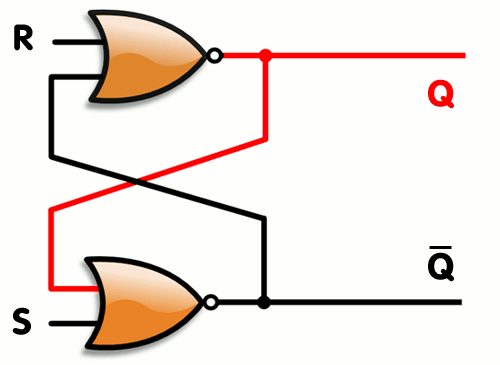http://www.livescience.com/46254-proof-theorem-axiom.html
And as bonus, here's the story of what prompted me to write it.
----------------
Thinking back to my Middle School days (only briefly... I can laugh now about how mean kids are when they're learning how to become people, but only because those days are long gone) I have this memory of chatting with my brother on the way back from the bus stop.
"Oh, and we learned about the Pythagorean Theorem in math today," he mentioned. I'd had a couple years more math than him at this point (and to me it was a bit of a hobby). Out of curiosity I asked:
"Did you prove it in class?"
"Yeah."
"Really? Which method did you use?"
"Uh... I don't know how to explain this without drawing a picture." The streetside upon which we were walking was covered in bark-o-mulch, so I implored him to humor me and use the ground as a canvas. He pretty much drew me this:

At the time, I lacked the words (and probably civility with either of my siblings) to say "No, that's not a proof." Here's the conversation I would have liked to have:
"How is this not a proof? I just showed the Pythagorean Theorem works!"
"You've shown the Pythagorean Theorem works in ONE case. The reason a statement like the Pythagorean Theorem is so powerful is because we know it works for EVERY right triangle."
"How am I supposed to draw every right triangle?"
"You can't. That would literally take forever."
"...How did Pythagoras prove it then?" I, in turn (and again in the mulch), would have drawn something like this:

"The square that forms in the middle space happens to be the square of the triangle’s hypotenuse (c²) . If we rearrange two of the triangles, we see that two squares are created, each one having the area of the square of each of the triangle’s legs (a² + b²). Since the two areas have to equal each other, we see that a² + b² = c²."
"But how's that better than the diagram I just drew?"
"Because this one works for EVERY right triangle."
"And mine doesn't?"
"The way you did it, we have to measure the sides to make sure it works, and repeat that measurement for every possible right triangle. With the way I just did it, we don't have to measure the sides of the triangle. Draw a right triangle in your head. It can be as big or small as you like, and the legs can be as close or as disparate in length as you like. I don't even have to see it. I know it will work with the procedure I just drew. The space in the middle of the square is always c², and the rearrangement always produces a² + b², and we know that the two areas always have to be equal."
"...And every proof is like this?"
"This is why mathematics is special apart from other sciences. What you drew would be analogous to an 'experiment.' The best we can do for scientific claims is experiment in order to verify or debunk them. If we try our hardest to debunk a claim using controlled, rigorous experiments and repeatedly and consistently FAIL, then we have no other choice than to accept that claim as true. This is what we mean by a good scientific claim being 'falsifiable.' It might be impossible to prove the earth is held by a giant invisible octopus, but there's no way to test such a claim. A claim like "lightning is a form of electricity" not only explains certain things we know about lightning, but we've been unable to produce experimental results that run contrary to that claim."
"But experiments aren't enough for mathematical claims?"
"No, because we can do better than experiment; we have proofs. If we suspect something to be true in mathematics before it's proven, we call it a conjecture."
"How's that different from a hypothesis?"
"A scientific claim makes the transition from hypothesis to theory as it stands against some duration of controlled rigorous experimentation. A mathematical claim makes the transition from conjecture to theorem once a proof is thought up. It doesn't matter if a conjecture stands the test of time. Until somebody thinks up a proof, it will remain a conjecture forever. One example is the "Twin Prime" conjecture. Mathematicians have believed since antiquity that there's an infinite number of pairs of prime numbers that have a difference of two, but nobody has been able to think up a proof."
That all aside, as first-year grad students, most members of my PhD chemical engineering class thought that the way to prove a real symmetric matrix is diagonalizable was to punch in numbers and see if it works... meaning none of them understood what a mathematical proof is either. I've not figured out why this isn't public knowledge, as it's the fundamental difference of why math is special apart from the other sciences.
So there. Two reasons why I thought the article was worth writing.

